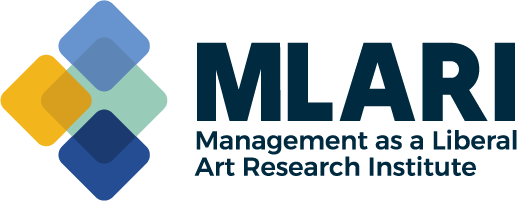Business Analysis Based on Drucker and Mintzberg
PUBLISHED:
Even today, practically every manager seeks maximum profits calculated by quantitative analysis and academic courses based on “quantitative analysis for business decisions” are taught at every graduate school. In the 1960s Peter Drucker and Henry Mintzberg concluded that liberal arts methods of analysis were needed because analysts in concluding that management was a science, excluded liberal arts in analysis but argued academics as to which mathematical methods were more appropriate depending on the situation. Yet only a few years earlier, Einstein won the Nobel Prize for theoretical physics by publishing four major papers in a single year, relying on the liberal arts with no computer and few mathematical equations.
Through economic analysis, an optimal numerical decision was easily calculated for maximum profit and quantitative models made business decisions easier. You just plugged the numbers into an equation. This followed science! However, economic analysis seeking maximum value alone provided a solution which actually resulted in a less than optimal solution. Drucker calculated that if maximum profitability was always the goal, success frequently attracted unwanted competition and led to undesirable results. He used the example of the transistor radio invented by American companies in the U.S. These companies eventually lost the entire market to Japanese firms through overpricing. Drucker concluded that while profitability was essential for business, maximum profitability was not. Laws were introduced limiting high pricing of critical medicines. Maximum profits could lead to failure of the product for firms and undesirable results for society.
Struggles with COVID-19 provide a recent example of the problems in attempts to “follow the science” and attempt to solve problems by quantitative analysis alone and omitting the liberal arts.
Lessons from the Pandemic
As COVID-19 became an important issue, analysts were pressured to “follow the science.” However, it went unnoticed that this was situational. There were always other factors and conflicting goals and benefits. This became more challenging as time went on and unexpected problems were revealed along with strains of the virus mutating. Several effective vaccines were produced under “Operation Warp Speed” despite doubts by many that a “Warp Speed Vaccine” was possible. Other issues surfaced. How many vaccinations were needed, and who should receive them and at what age? Experts looked at numbers and arrived at different conclusions. Some argued that certain individuals should be given priority when distributing the limited supply of vaccines, yet others maintained the vaccine should be required for everyone regardless of any other factor. Ultimately, many recipients rejected vaccination.
An optimal decision requires a different and more complex analysis than the outcome of a single goal analysis or quantitative conclusion. The COVID-19 experience forced us to recognize that there are almost always multiple and conflicting goal solutions and success experiences and that reaching one goal might result in failure or higher risk in others. Finding solutions which considered economic recovery, the need to educate schoolchildren, the worldwide nature of the pandemic, vulnerability, and effect on different age groups and those with other underlying illnesses and more required consideration of a much broader range of situational factors. Even the personalities and abilities of those involved in implementation as well as the culture, customs, and belief systems of the groups requiring help, available resources and other complicated issues must be considered. Politics might affect interpretation of data and decisions far removed from the injunction to simply “follow the science.” Experts appeared on all sides of important issues, and they frequently differed on interpretations of “fake news,” political issues, scientific dangers, or opinions on what certain data meant and what actions should be taken or avoided.
Multiple Factors Complicate Management Decisions
Einstein had grappled with similar problems using liberal arts long before COVID. In 1905, he had employed the liberal arts and not quantitative analysis, to explore highly technical questions in theoretical physics. Einstein developed the theory of relativity and the equation E=MC² for conservation of energy without a computer, or even the use of chalkboards with only the liberal arts and his own imagination. He was awarded the Nobel Prize for theoretical physics for publishing four major papers in a single year using the liberal arts without complicated mathematics or computers (which he confirmed years later in an article in the London Times).
Two Experts who rethought Management
Almost simultaneously, two leading management scientists, Peter Drucker and Henry Mintzberg, concluded that economic analysis alone was insufficient. Both independently concluded that because management itself is an art, effective management decisions require the complete liberal arts spectrum including economics and the physical sciences because certain liberal arts must also be employed which might be of equal or more importance at different times and situations.
Drucker and Mintzberg
The these two geniuses especially noted the prime importance of the liberal arts. Drucker wrote that “management is what tradition used to call a liberal art: ‘liberal’ because it deals with the fundamentals of knowledge, self-knowledge, wisdom, and leadership; ‘art’ because it deals with practice and application.” He called knowledge, self-knowledge, wisdom, and leadership “the four essentials” of the process of liberal arts he visualized.
Drucker wrote that leadership is the most important essential and results in 50% of the quality of outcome of any endeavor. Whereas others said that integrity and social responsibility were desirable with leadership, Drucker taught that they were required.
Drucker and his dean, Paul Albrecht, established a Ph.D. program, which, though it offered traditional courses, included other special courses that Drucker himself developed and taught. These courses were outside of the traditional specialty graduate courses offered in a management program. Some called the results “the Drucker difference.”
The approach used behind Drucker’s work was uncovered by Minglo Shao and C. William Pollard, both members of the Drucker Institute Board at Claremont Graduate University where Drucker taught. With another Board Member, Bob Buford, they developed and promoted “management as a liberal art” or MLA and furthered its development. They also commissioned a book, Drucker’s Lost Art of Management by Joseph Maciariello and Karen Linkletter (McGraw-Hill, 2011), which introduced the social responsibility aspect of leadership in MLA as a prime philosophy of management. Professor Maciariello developed and taught a non-degree online course on MLA primarily based solely on this aspect.
Henry Mintzberg’s Innovations
Meanwhile, at McGill University, Henry Mintzberg, an internationally known management scientist, from Canada came to similar conclusions. He wrote that “management, is above all a practice, where art, science and craft meet.” Going further, he theorized that many of the basic courses in accounting, finance etc. required by managers for an MBA were unnecessary, as the material was already part of programs for attaining specialty graduate business degrees. He suggested that the time spent on these courses was better spent mastering the understanding and practice of general management as specialists already assisted generalist managers with support in their areas of expertise.
Along with partners in other countries, Mintzberg developed an accredited graduate management degree that was not an MBA. He convinced senior academic administrators and others at McGill University in Canda to test his concepts in a fully functioning academic and accredited program outside of the school of business. Based on its success, the program grew and he wrote a bestselling book, Managers, not MBAs (Berrett-Koehler, 2004) which explained his views on the shortcomings of the MBA for educating managers. Many of his ideas dovetail with teachings under the MLA banner, including the notion of reflective mindsets, shared competencies, and an emphasis on teamwork and recognition of global management culture.
Mintzberg recognized that reflective mind-sets impact on how a manager looks at any problem. This helps frame how problems are perceived. Therefore, his students practiced one of five mind-sets of emphasis in each of five countries as they traveled worldwide in solving management problems and completing his program. These were: (1.) Reflective mind-set, (2.) Analytic mind-set, (3.) Worldly mind-set, (4.) Collaboration and Cooperation mind-set, (5.) Action mind-set.
Mintzberg also recognized that experienced managers look at any problem differently and might develop different, but equally effective solutions. This fitted with another of Drucker’s observations that the largest breakthroughs and innovations frequently occur when employees with backgrounds from different industries or companies changed jobs, which changed the environments of their practices. They brought with them their old ideas, thinking, and procedures that had been used in their previous organizations, unknown to the new organization with which they were now affiliated. Mintzberg also developed the concept of shared competencies by which experienced students shared ideas for more innovative solutions.
Drucker’s MLA and Mintzberg’s successful development and application of the liberal arts for management decision making demonstrate the flexibility and almost unlimited potential of the MLA concept for success and additional development and that MLA is adaptable to all organizations for more effective problem solving and decision making.
References
A Class with Drucker by William A. Cohen (AMACOM, 2008)
Consulting Drucker by William A. Cohen (LID, 2019)
Drucker’s Lost Art of Management by Joseph A Maciariello and Karen Linkletter (McGraw-Hill, 2011)
Drucker’s Way to the Top by William A. Cohen (LID, 2019)
Managers, not MBAs by Henry Mintzberg (Berrett-Koehler, 2004)
The New Realities by Peter F. Drucker (HarperCollins, 1989)





